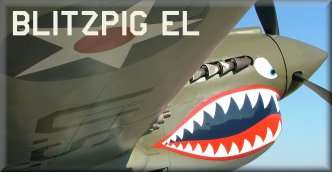
 |
|
|||||||
| FM/DM threads Everything about FM/DM in CoD |
 |
|
|
Thread Tools | Display Modes |
|
|
|
#1
|
|||
|
|||
|
Quote:
As a pilot and mechanic who's flown or done ground runs on radials (from R670s on through R2800s) on not sure I've ever waited more than about 5 mins for warm up. And warm up is usually not done at idle. About all you're looking for is oil temp because the oil is usually a heavy, single viscosity, like 50 weight, and if you throttle up too much too soon pressure will get too high popping gaskets in some areas while other areas will have low oil volume. Roller motors like the R2800 can actually handle low oil flow surprisingly well, though, because they don't rely primarily on plain bearings. |
|
#2
|
|||
|
|||
|
Quote:
|
|
#3
|
|||
|
|||
|
The next update instead of fixing the crashing memory windows fart
Were going to have a old man with a can of methoxymethane (Ether ) standing infront of the aircraft yelling out "try it now!" |
|
#4
|
|||
|
|||
|
Quote:
Here's a P-47 cold start with two mins to taxi. (Note the smoke which takes forever to clear because of the long exhaust to turbo - most Jugs today don't have this, they have conventional side exhausts at the original waste gate location.) PS. The smoke is from oil that has accumulated in the exhaust system and cylinders since the previous shutdown. Before starting a cold radial (or inverted) engine, always pull the prop through (forward) at least 2 full crankshaft revolutions, usually between (for a three blade prop) 6 and 18 blades, depending on gear reduction. Last edited by zipper; 11-08-2011 at 05:56 PM. |
|
#5
|
||||
|
||||
|
Was that a cold start as in the first start of the day?
__________________
 Personally speaking, the P-40 could contend on an equal footing with all the types of Messerschmitts, almost to the end of 1943. ~Nikolay Gerasimovitch Golodnikov |
|
#6
|
|||
|
|||
|
And what was the weather like?
A "cold" start in the summer near Atlanta is a very different animal from a (genuinely) cold (and probably wet) start during a British summer, let alone (for example) a Russian winter... |
|
#7
|
|||
|
|||
|
Quote:
At 4:24 he taxied behind the C47 blocking the camera mans view, and one second later at 4:25 the P47 was taking takeoff. The camera man had to plenty of time to reposition for a better view of the takeoff because the P47 was at the far end of the runway (out of sight) warming up for 20 to 30 minutes before the camera man filmed the take off. Last edited by BP_Tailspin; 11-09-2011 at 03:43 PM. |
|
#8
|
|||
|
|||
|
lol - ok, guys. NOTE: I was there BUT did not shoot this video.
It was the end of May in Atlanta. Was comfortably warm, not hot by any stretch, and slightly humid. It was the first start of the day for the Jug. The video is clipped but it was not a twenty or more minute delay to takeoff, more like fifteen. The taxi was nearly half of that with run-up the majority of the other half. Even with the paddle blades there isn't an awful lot of airflow from the prop on the ground so the danger is almost always (unless in the snow, of course - lol) overheating before takeoff. Heavy bombers at large bases lining up for massive raids would sometimes adopt the technique of taxiing on inboards, then switching to outboards and then back again to control temps (and that's with paddles). The bat handles on the early F4U, as a contrast, required rather quick, deliberate action on the ground in the Pacific, as you might imagine. ... AND ... once you're good for 1000+ rpm (40C) you're good to go, temp wise. What might hold you back a little is if you are paying for it (you just can't baby your $75000 motor too much, eh?). The taxpayer was swapping out the engine in a couple hundred hours (at least, hopefully) during the war so they did what they did back then (i.e. use 70" for takeoff). Ground crew run-ups prior to missions were as much or more a systems check as engine warm-up. Last edited by zipper; 11-10-2011 at 05:04 PM. |
 |
| Thread Tools | |
| Display Modes | |
|
|